Detroit: Blighted But Also Blessed
My parents used to live close to Detroit on the Canadian side of the border in a town called Sarnia. That’s not where I grew up. It’s just where my parents retired to.
On one of my annual visits to see my parents I thought it would be a good idea to travel the short distance to Detroit and spend a few days there. Why not? It was just over the horizon after all. I booked a hotel online and headed across the border. This was on a Sunday in March, 2010.
After I was checked into my hotel I grabbed my camera bag and went out to have a look around. Downtown Detroit was deserted. I saw more cars than people, and I didn’t see many cars. I could walk for blocks without seeing any sign of life. Many of the buildings were shuttered and desolate. Even many of the stores that appeared to be still in business were closed.
I walked over to Woodward Avenue, the main north-south roadway. The street was mostly desolate but I saw a restaurant and bar called the Hockey Town Cafe that was open and I could see some people inside. Next door was a grand old theatre called the Fox. It was quite imposing and obviously still in operation. Even here though it was largely barren of other people. The occasional car or pedestrian would pass. Of the few people on the street some appeared to be homeless.
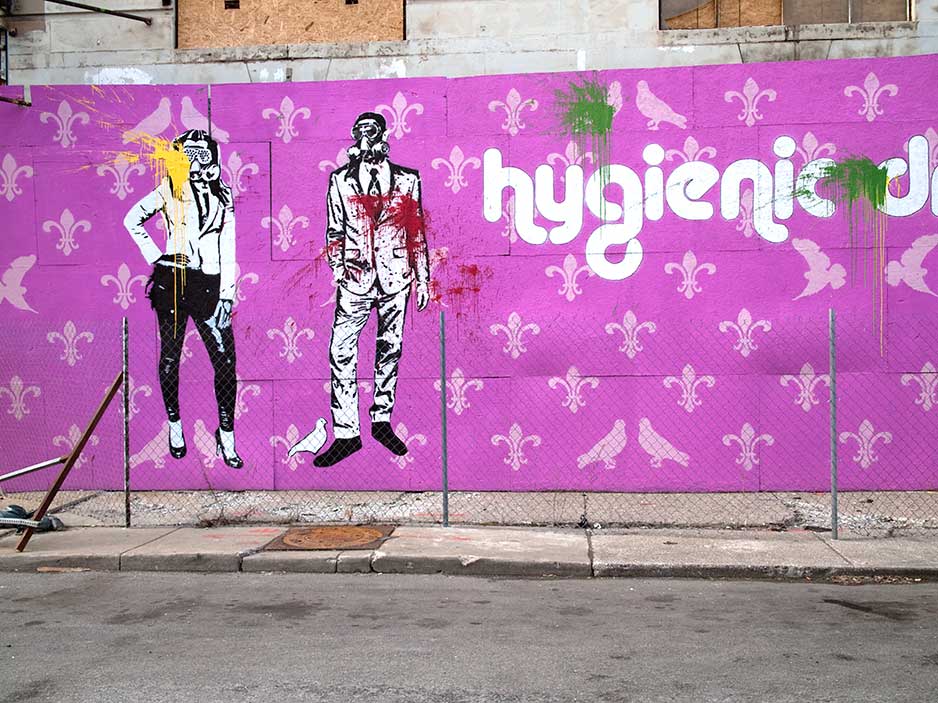
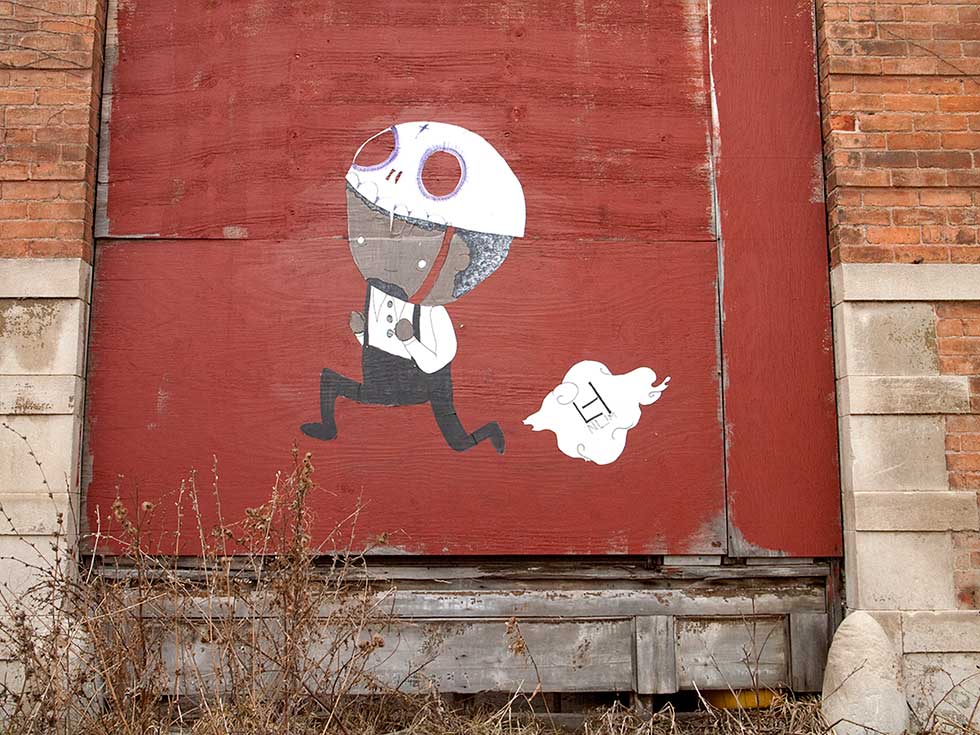
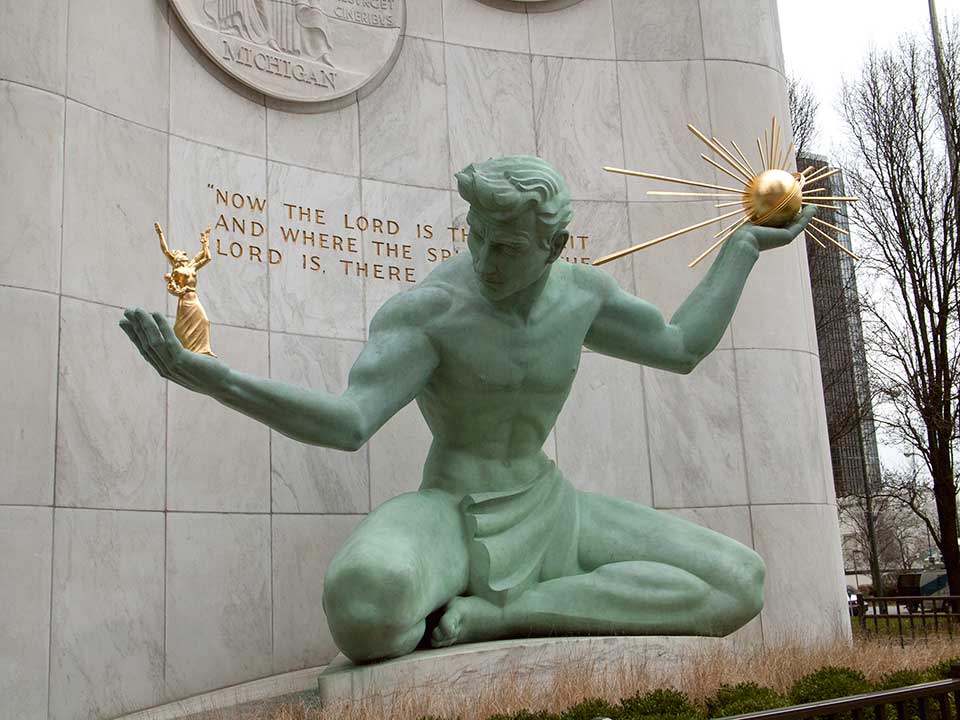
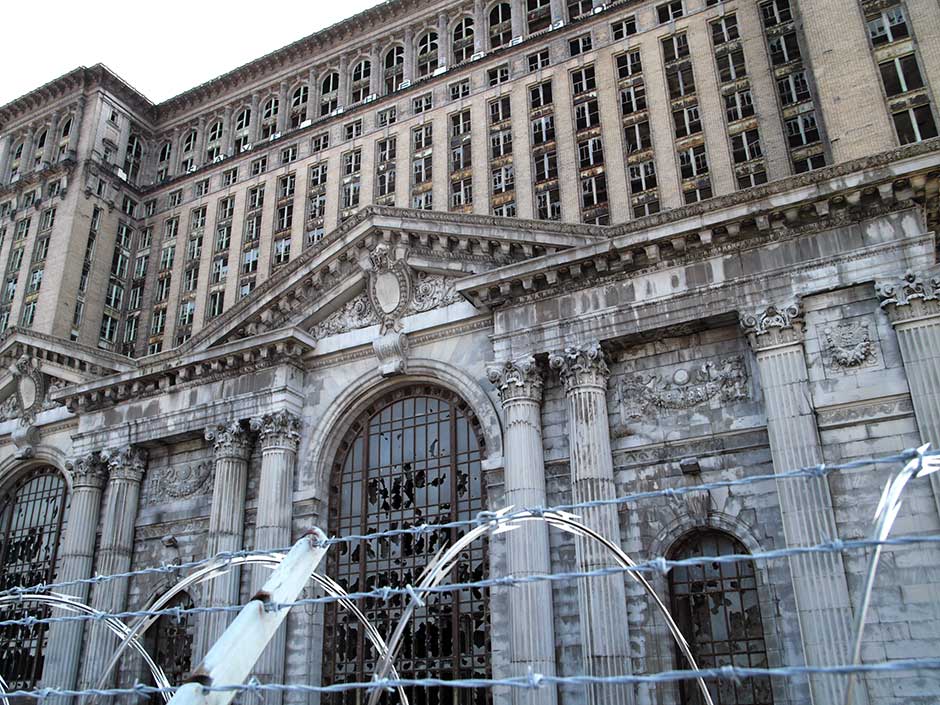
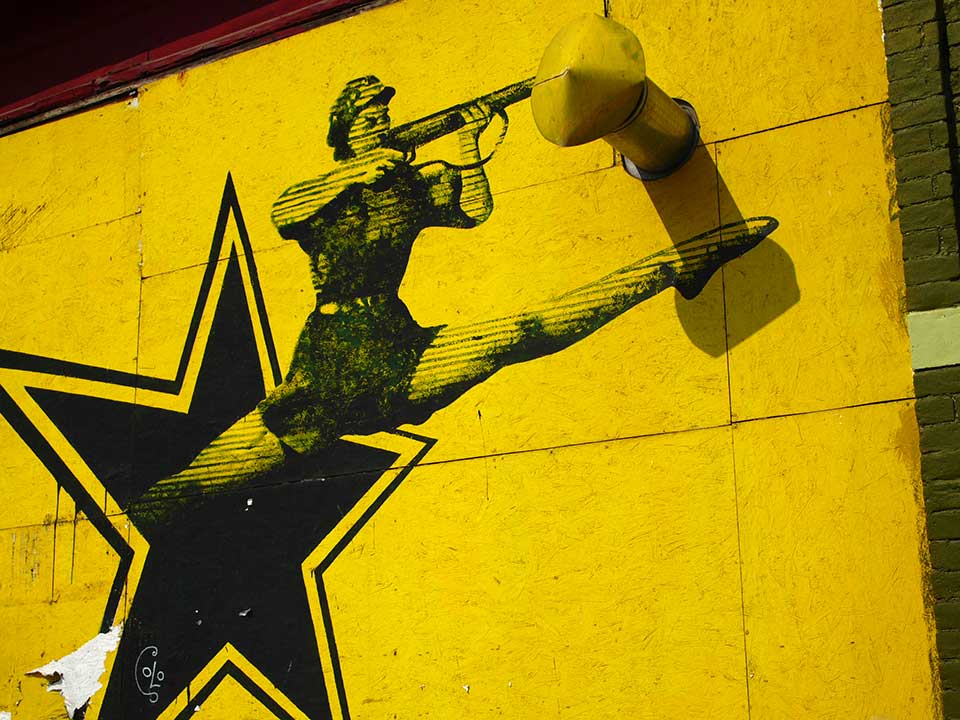
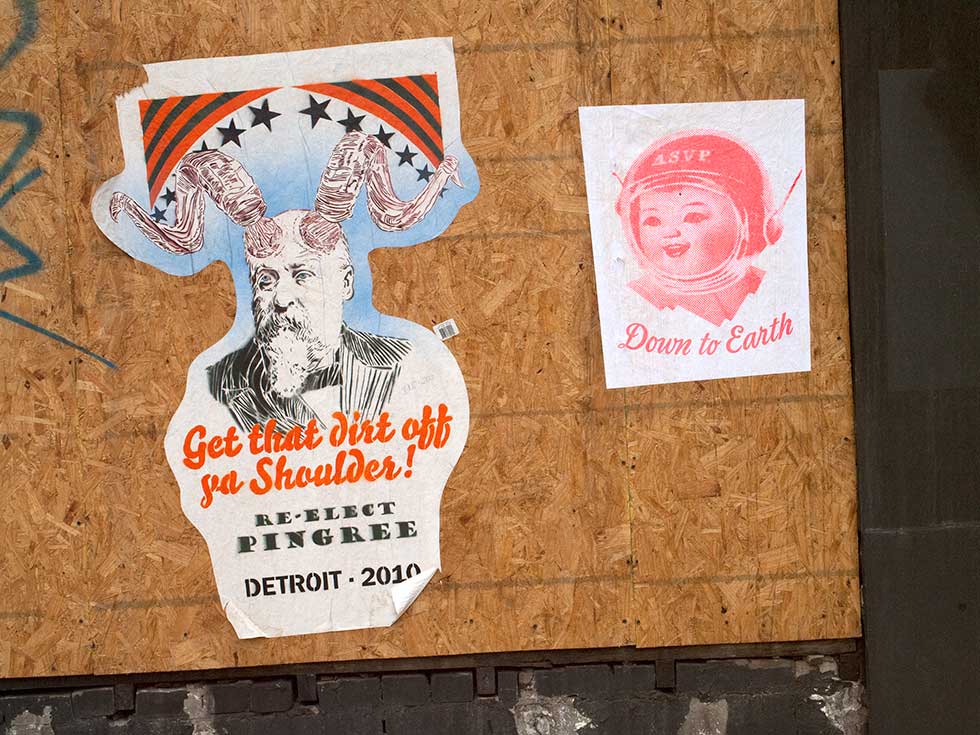
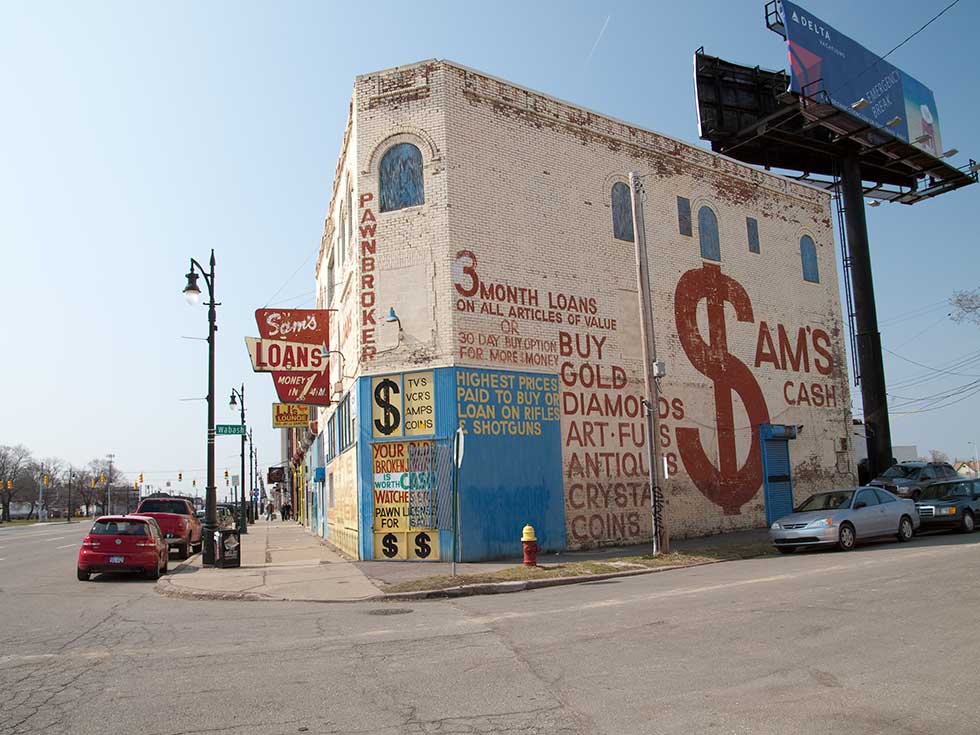
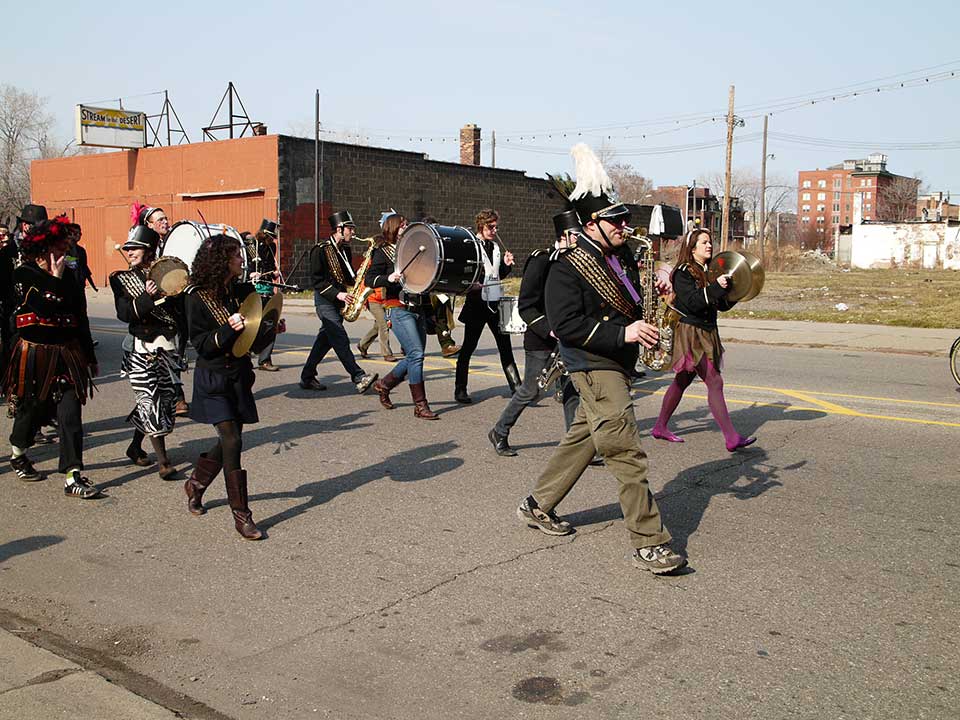
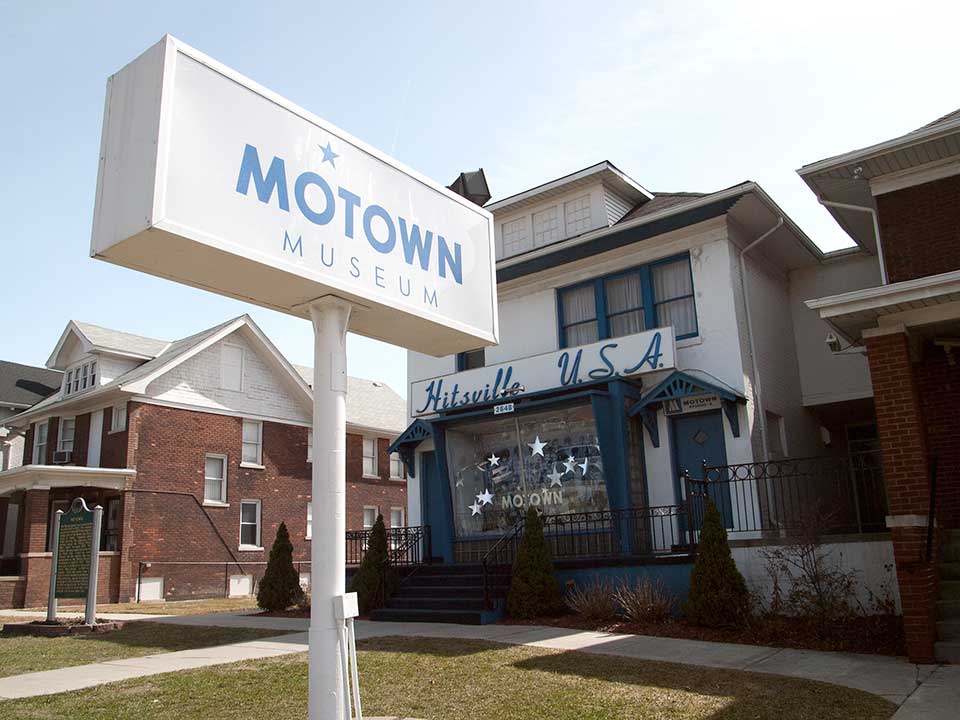
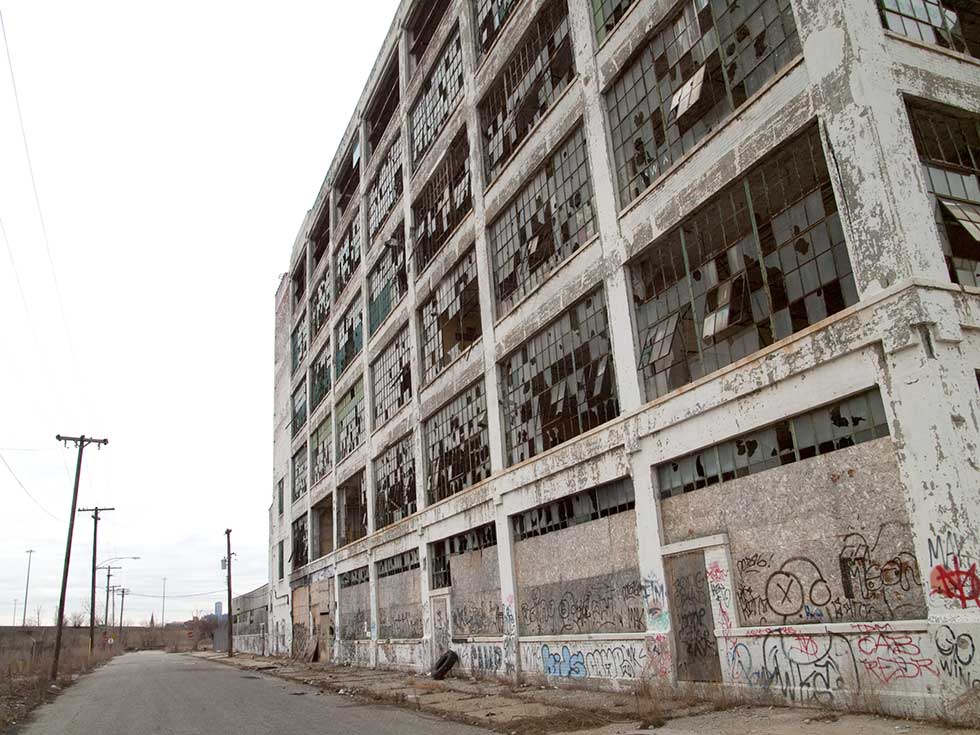
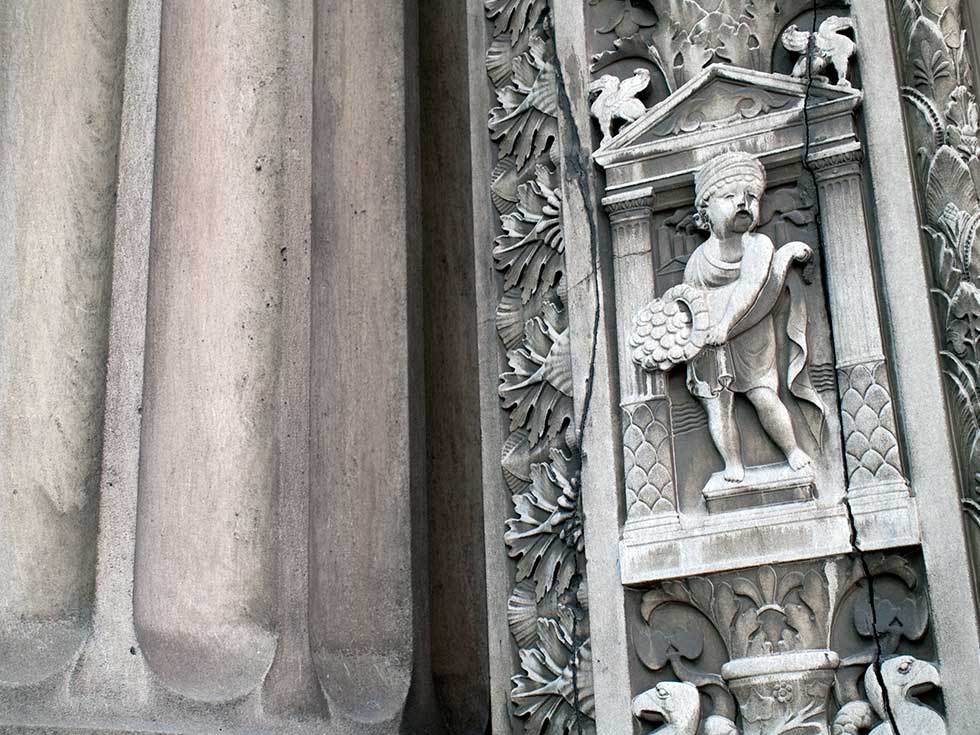
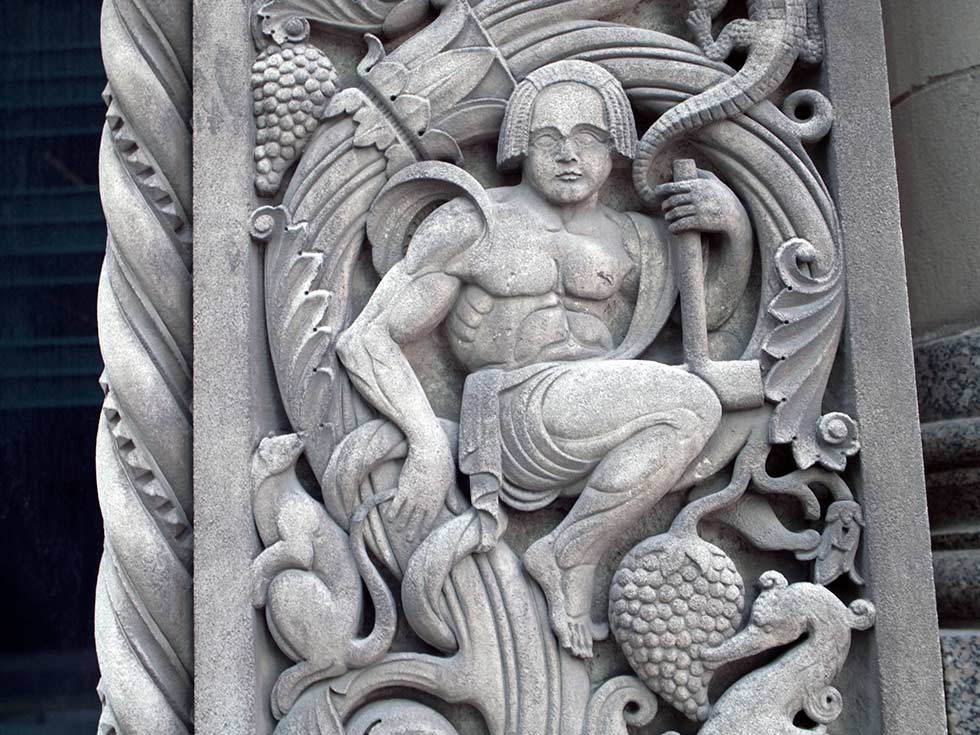
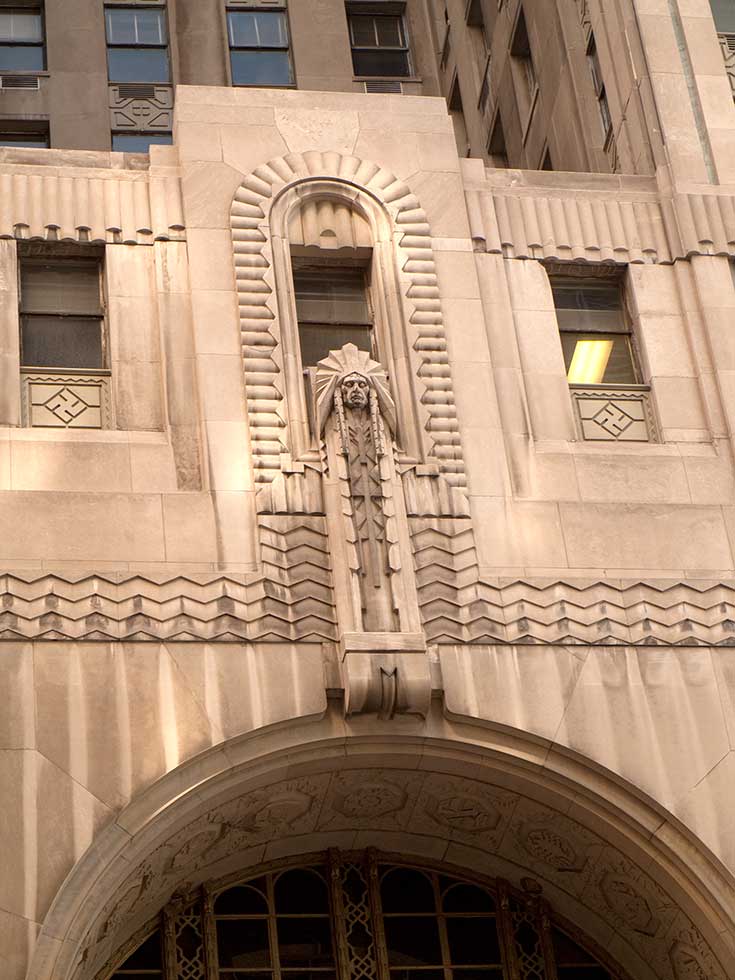
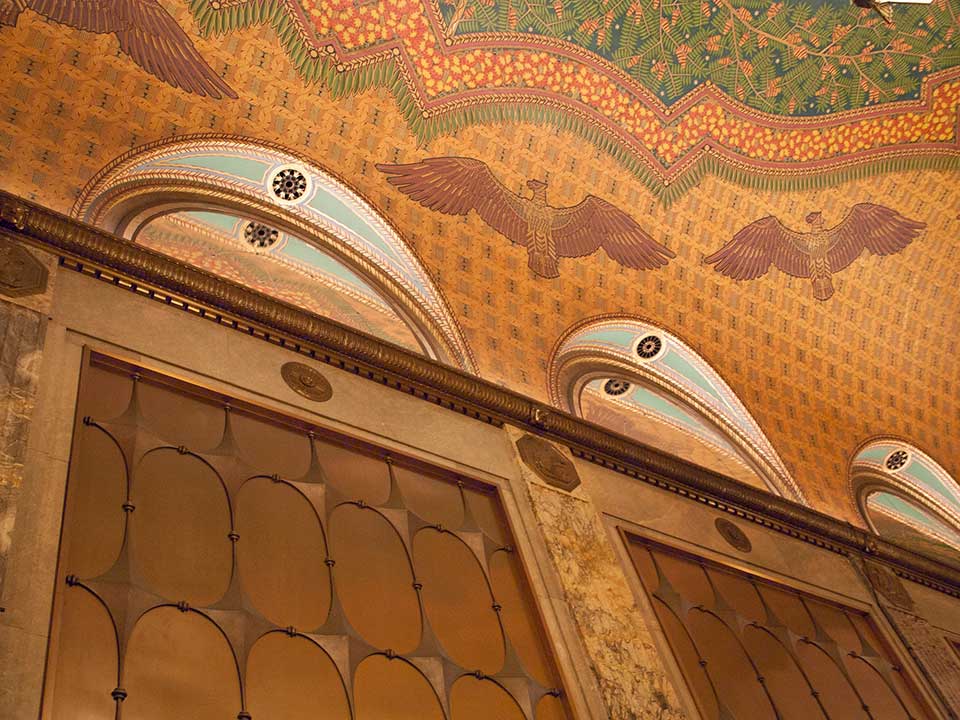
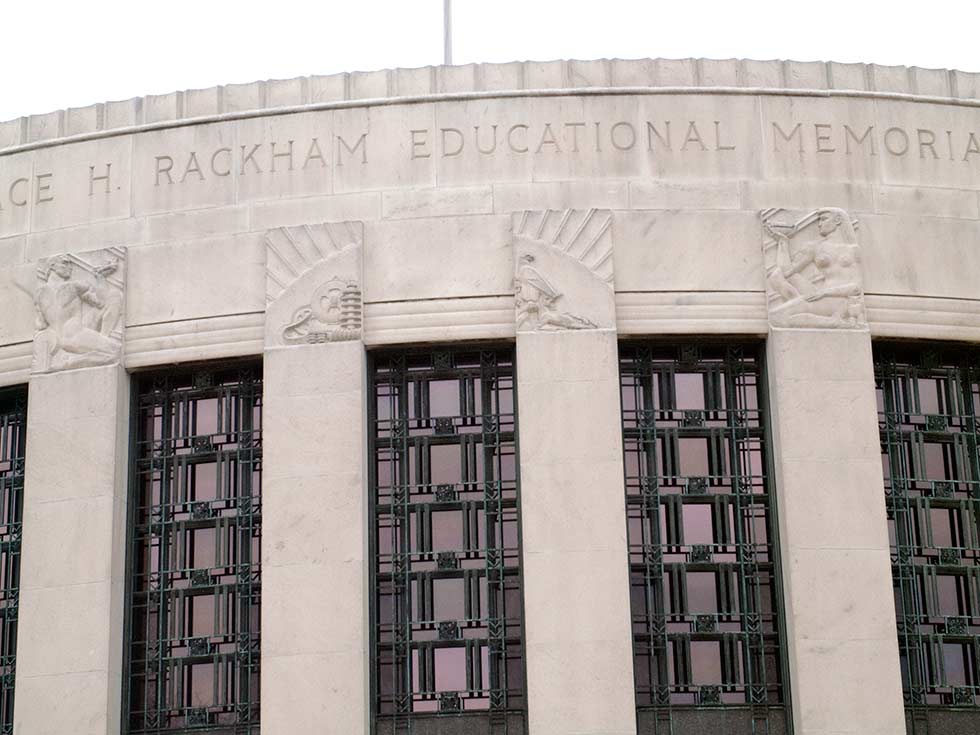
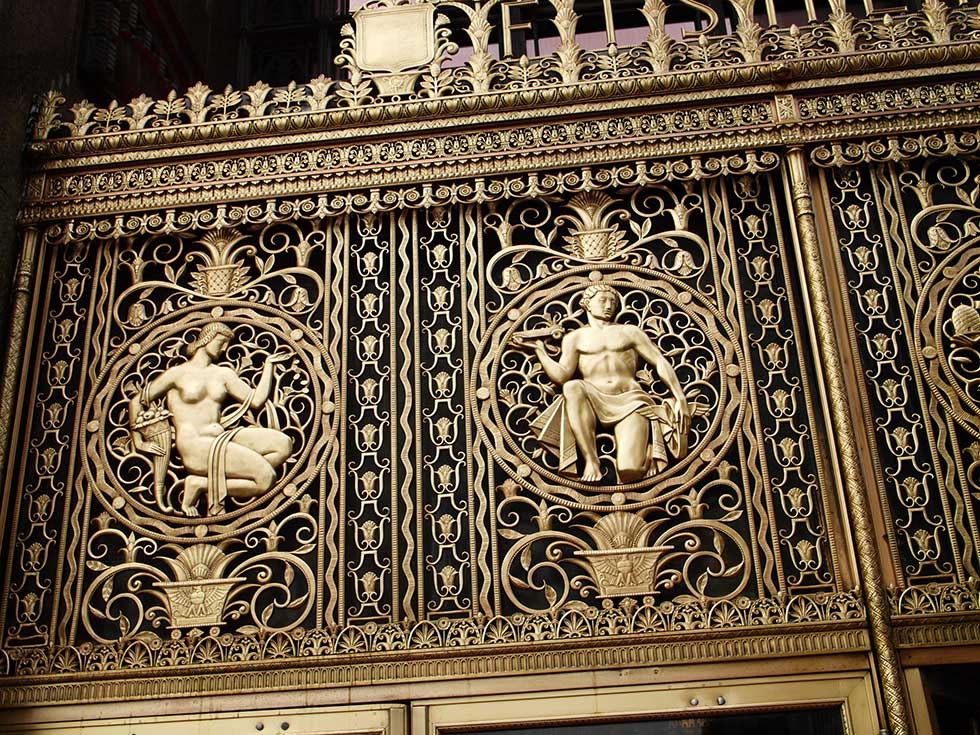
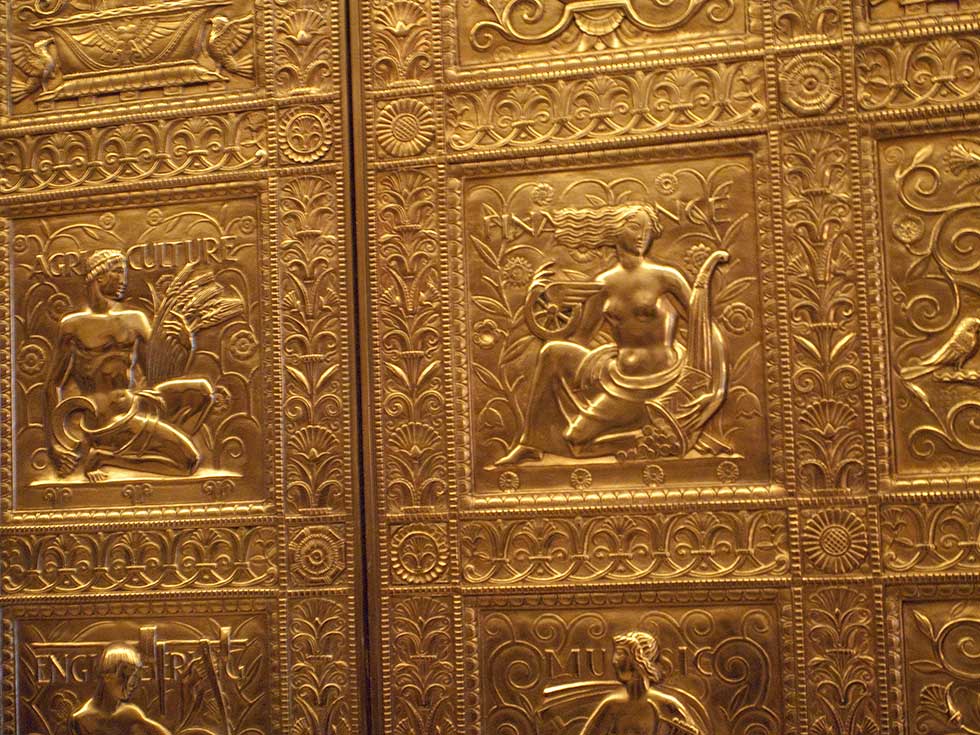
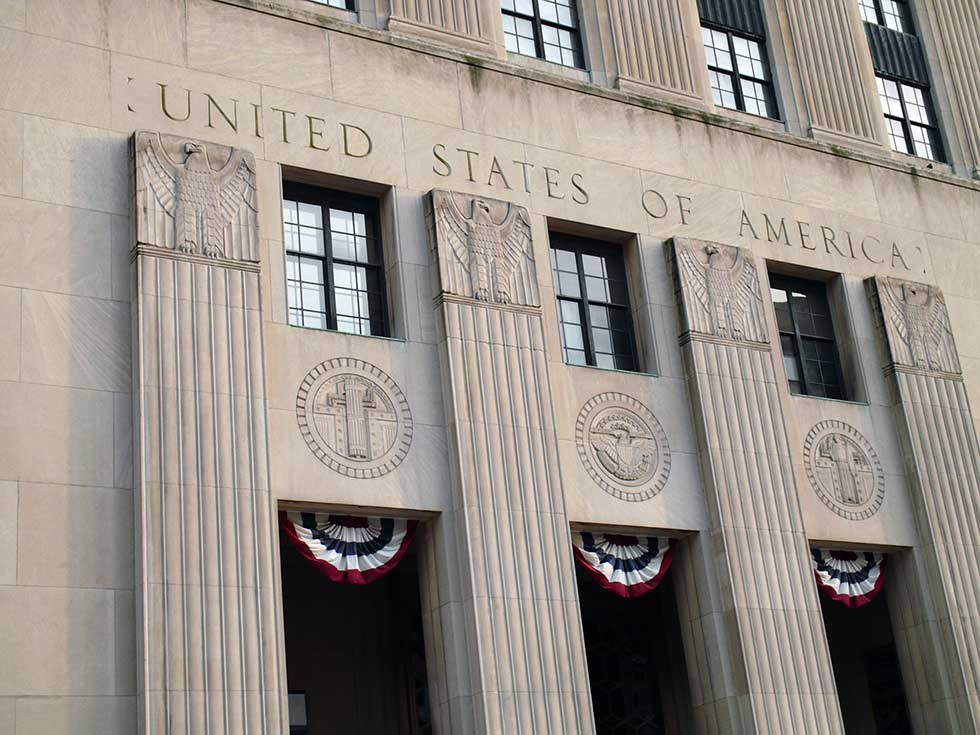
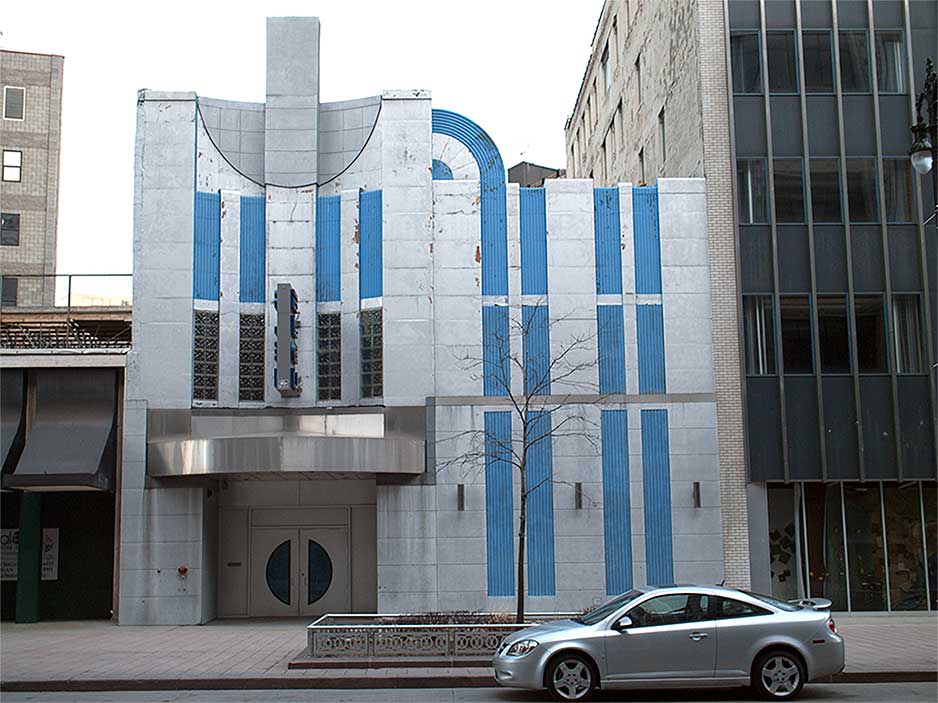
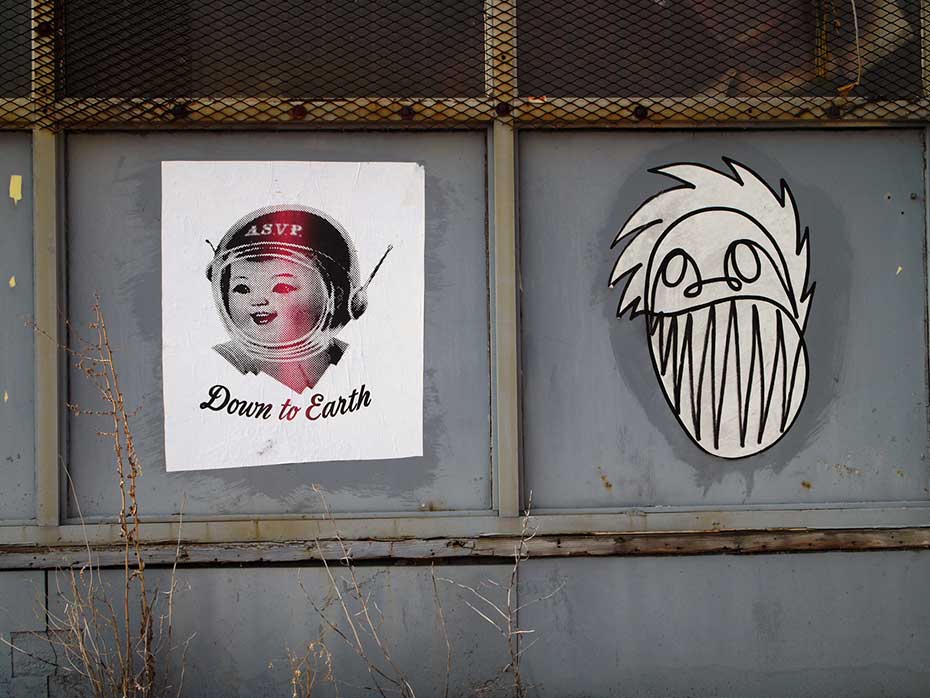
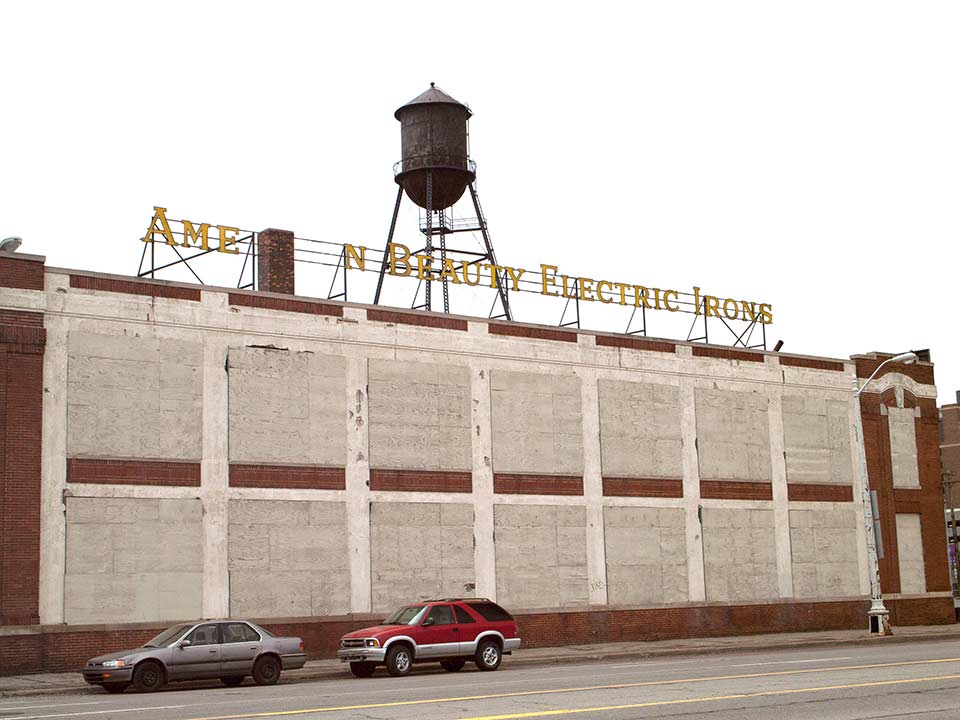
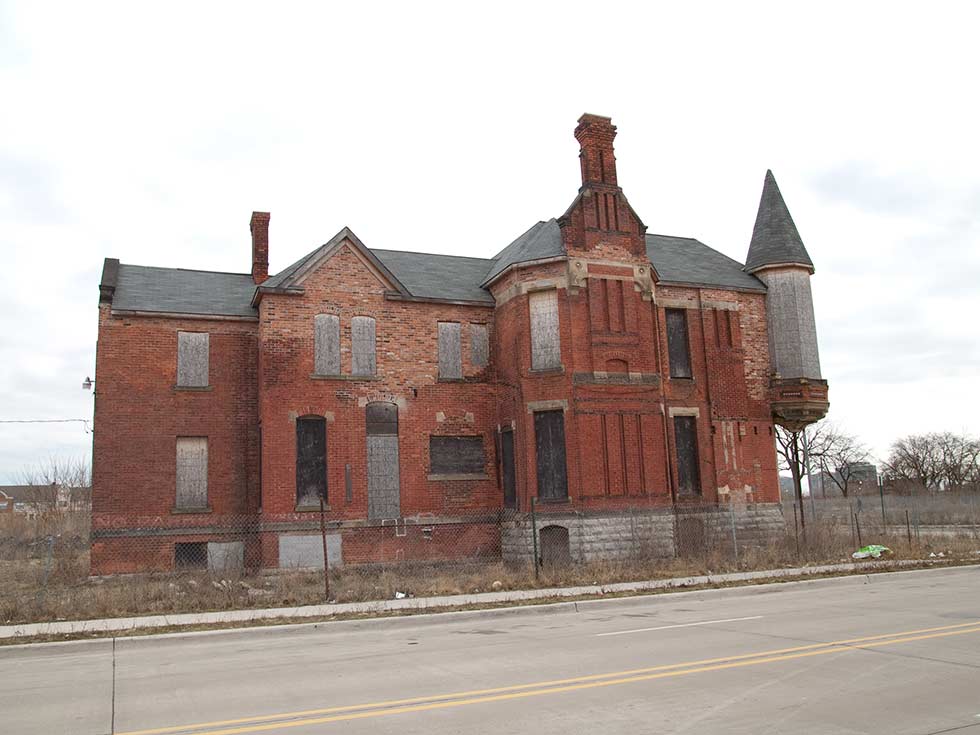
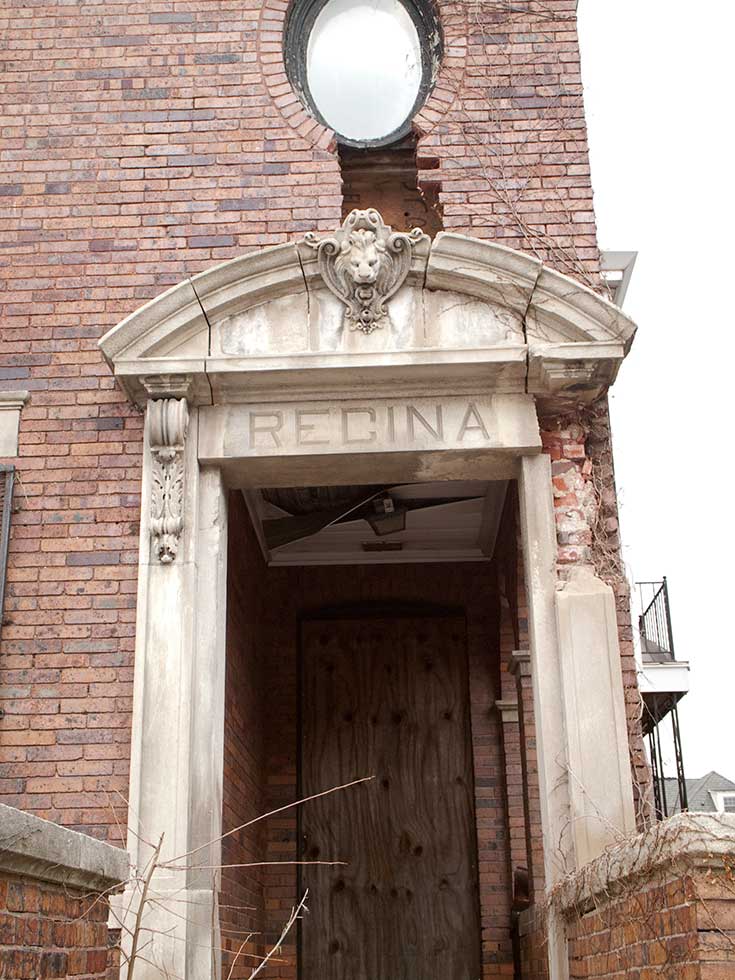
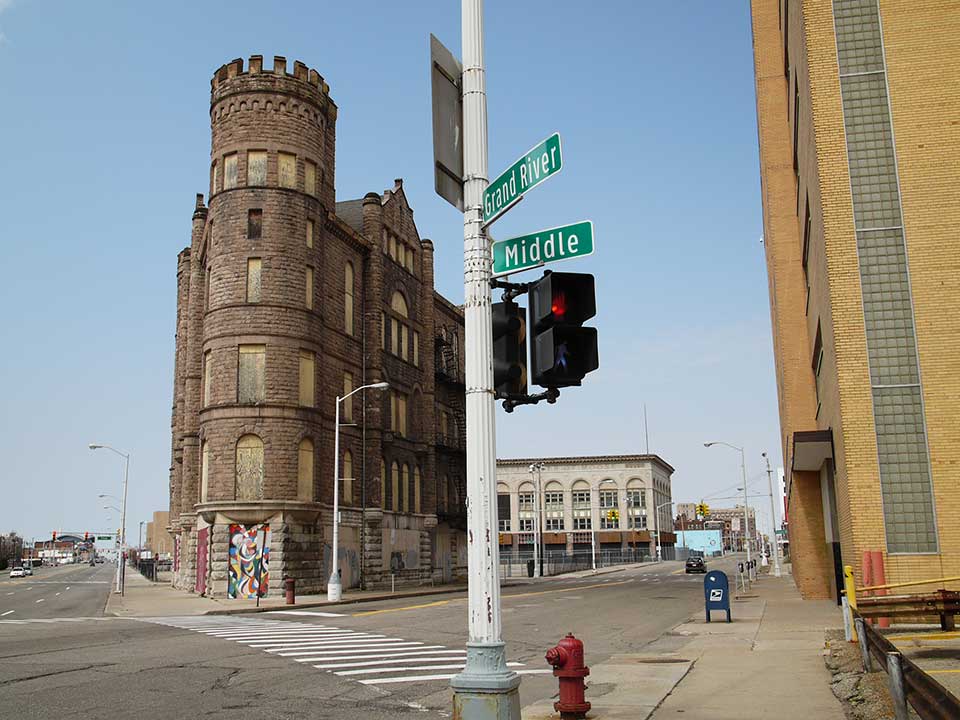
The next day, a Monday, there were more people and vehicles downtown. It was a work day so that made sense. Even so, the numbers of pedestrians and cars was still quite low and the general ghost town ambience had only partly abated. That only changed when I walked over to the Renaissance Center. The RenCen as it’s nicknamed is a complex of seven high-rise towers that contains a huge number of office spaces, shopping malls, and a giant hotel. The international headquarters of General Motors is situated here also. The project was completed in the mid 1970’s partly as a means of spurring a revival in the economy of downtown Detroit. It was less than a resounding success as far as generating a rebirth of the whole of downtown goes. Even so the Renaissance Center itself is a viable business concern. Walking around inside is like entering another city all together. There’s plenty of people about doing all the things people routinely do in an urban setting; working, shopping, talking on their cell phones, dining in the restaurants, and so on. It’s was quite a contrast to the quietude outside.
I sauntered over to Joe Louis Arena to buy a ticket for that night’s hockey game. The Detroit Red Wings were going to host the Pittsburgh Penguins. This was going to be a real grudge match because the Penguins had defeated Detroit in the previous year’s Stanley Cup final. This game was the first match up between the two teams since then. On top of that, Sidney Crosby, the captain of the Pittsburgh team had scored the winning goal in the gold medal final between Canada and the United States at the Vancouver Winter Olympics just a month before. I knew the home crowd would be especially happy to see the Red Wings prevail over the Penguins. Whenever Crosby had possession of the puck the crowd would take to chanting “Crosby Sucks, Crosby Sucks!”. Detroit went on to win 3-1. That was okay by me.
Detroit has lost over half of it’s population since the 1950’s. Back then it was the 4th largest city in the US. Now it’s the 11th largest. Much has been written about the decline of Detroit and many reasons for this have been cited.
Being so dependent on one industry certainly put the city in a tenuous spot after American car manufacturers – all centered in Detroit – began having so much trouble competing against foreign-made imports. In its prime, in the post-war years, General Motors was the largest corporation in the world. Detroit was at its apex back then.
Racial tensions and the subsequent “white flight” out of the center to the suburbs is another reason commonly mentioned as a cause of the decline of Detroit . There was a huge riot in 1967 that acted as a catalyst for encouraging more people to decide to pull up stakes and leave town.
Detroit has became well known for it’s profusion of derelict buildings. A cultural oddity known as “ruins porn” has grown up out of that fact. Many people journey to Detroit for the express purpose of photographing ruined buildings. The most well known of these has to be the old Michigan Central Station, the once imposing central train station . Now it looks like it’s set in a bombed-out city in World War II era Europe. It’s ringed with razor wire which only helps to add to the air of gloominess.
Many citizens of Detroit are outraged that there home town has become ground zero of the ruins porn phenomenon. Once I was photographing a ruined building when a man who happened by in his car slammed on the brakes, stuck his head out the window on the passenger side and demanded to know why I was taking photos of the building. He was very irate. I was too taken aback to answer. He shot me a look of disgust and sped away.
The uninhabited buildings in the city, the homes. the businesses, and the skyscrapers aren’t just subjected to the gradual decay that comes with not being maintained. Once they are left deserted vandals go to work demolishing what they can. From the 1970’s to 90’s Detroit suffered from an epidemic of arson fires that were usually lit in neglected buildings. Burnt out hulks of former homes are all over the city. The city government boards up abandoned buildings and it’s illegal to enter these but that doesn’t stop the malicious demolitions,
So yes I was guilty of indulging in ruins porn but I was also quite aware that there is still plenty of beauty left in Detroit. I planned to photograph Art Deco architecture in the city once I arrived there. Detroit has some of the most magnificent Art Deco structures to be seen anywhere. There are at least four Art Deco skyscrapers in the city. I visited and photographed the Fisher Building, The Guardian Building, and the Penobscot Building. I missed out on the Buhl Building. Thankfully all of these terrific Art Deco gems are still in fine condition and continue to be used as commercial space. The Fisher Building is especially impressive. It’s easily one off the finest examples of Art Deco architecture in the United States. The intricate metallic finery at the building’s entrance is really gorgeous as is the lobby and the elevator doors.
Another very impressive example of Art Deco styling is the building that houses the Detroit Institute of Arts which contains a large and diverse, world-class collection of art. One of the finest collections anywhere in fact.
The splendid bronze Spirit of Detroit monument downtown is another excellent example of Art Deco form. I also happened upon an old blue and white Art Deco movie theatre on Woodward Avenue. It was in fine condition. I’ve no idea what it’s used for now.
Detroit is very spread out. I was only there for 3 days and I got around almost entirely on foot. Public transit in Detroit is rudimentary. There’s no subway or tramlines. Buses are a rare sight. I suppose that’s fitting in a town that calls itself the Motor City. There is something called the Detroit People Mover, an elevated train, but it serves only a portion of the downtown core.
I made a pilgrimage to the Motown Museum where the original recording studio of Motown Records is located. Great soul music legends like Smokey Robinson, Stevie Wonder, and the Supremes recorded there in the early ’60’s. The studio is in a typical looking American home. Berry Gordy, the founder of Motown Records lived on the top floor with his family. I’ve long been a fan of 1960’s soul and rhythm and blues so it was a thrill for me to take the tour of the facility. Inside it still looks like it did back in the glory days of Motown.
I knew there were other worthwhile things there I didn’t get time to see. For example, I took a pass on actually entering the Detroit Institute of Arts. I had to choose between going inside to see its vast assemblage of art and spending half a day there or continuing on with my previous planned decision to photograph as much Art Deco architecture as time allowed. I had hoped to have the chance to visit Belle Isle, a park in the Detroit River where there’s a magnificent century-old aquarium, conservatory, and botanical garden. The grounds of Belle Isle were designed by Frederick Law Olmsted, the same man who planned the layout of New York’s Central Park.
In the hopes of motivating young artists and designers in other parts of the United States to move to Detroit, the city government has been advertising the affordability of housing there in pricey places like New York and San Francisco. This is meeting with some success. Creative people in the arts generally have a tough time affording expensive cities. Detroit can offer foreclosed houses for sale at rock bottom prices. In addition there are some empty factories that have been converted into studio spaces. This is stimulating some repopulating of neighbourhoods in Detroit. It’s too early to know if the trickle of newcomers to the city will stimulate a long term renaissance but it’s encouraging.
It seemed to me that there must be a healthy arts scene in Detroit when I was there. I came to this conclusion after seeing some imaginative street art during my walks around town.
It would be great to see a revitalized Detroit. Of course if that takes place it could get too expensive for young creatives.